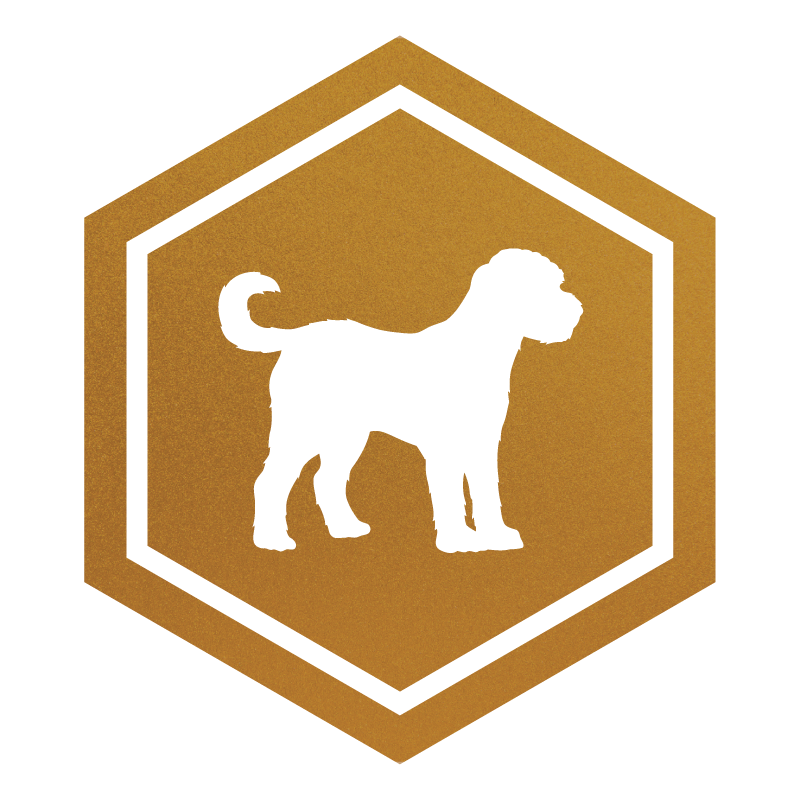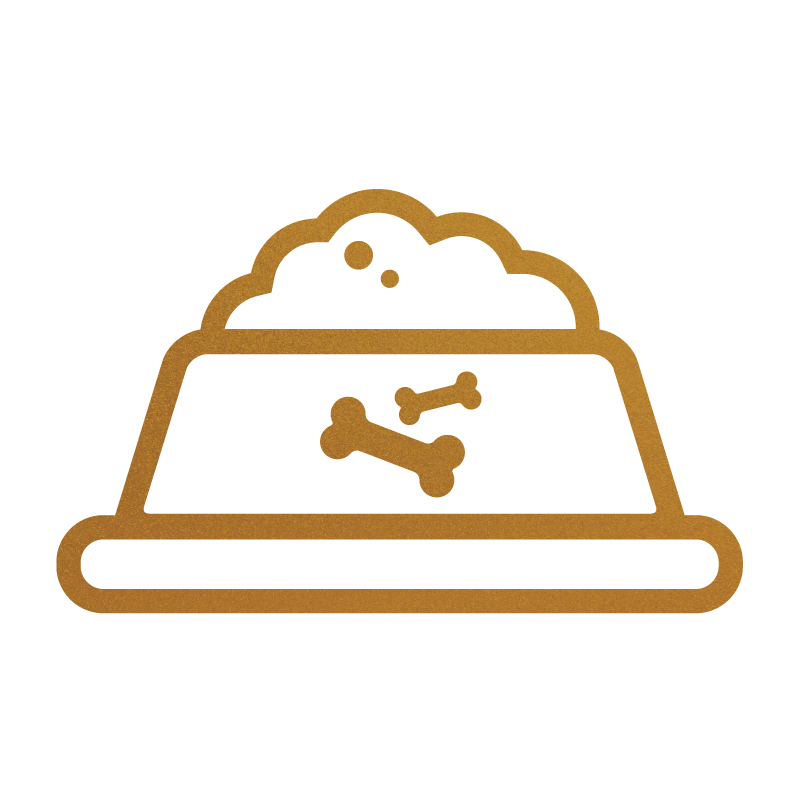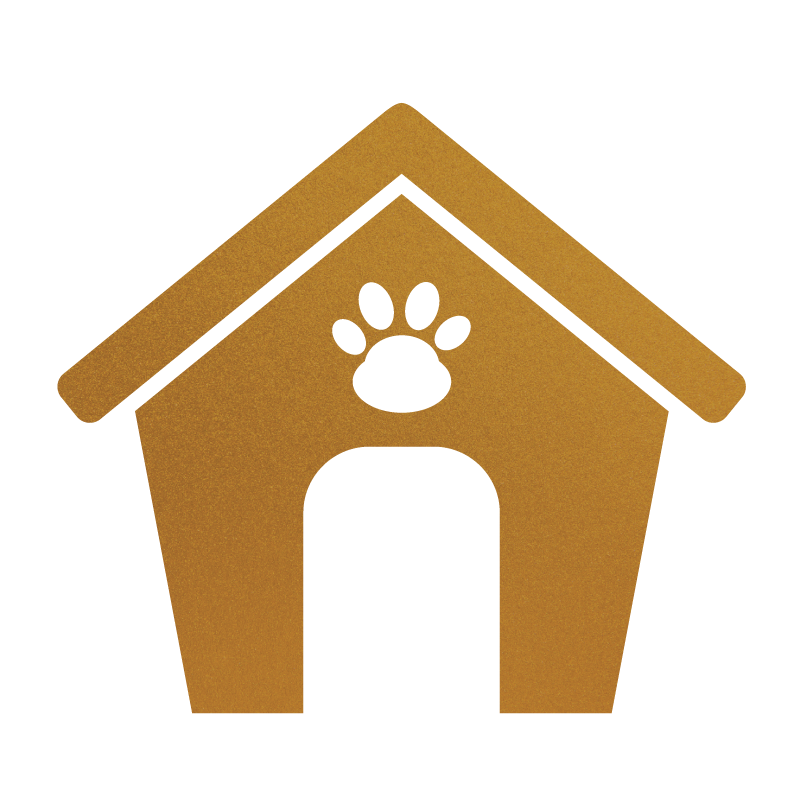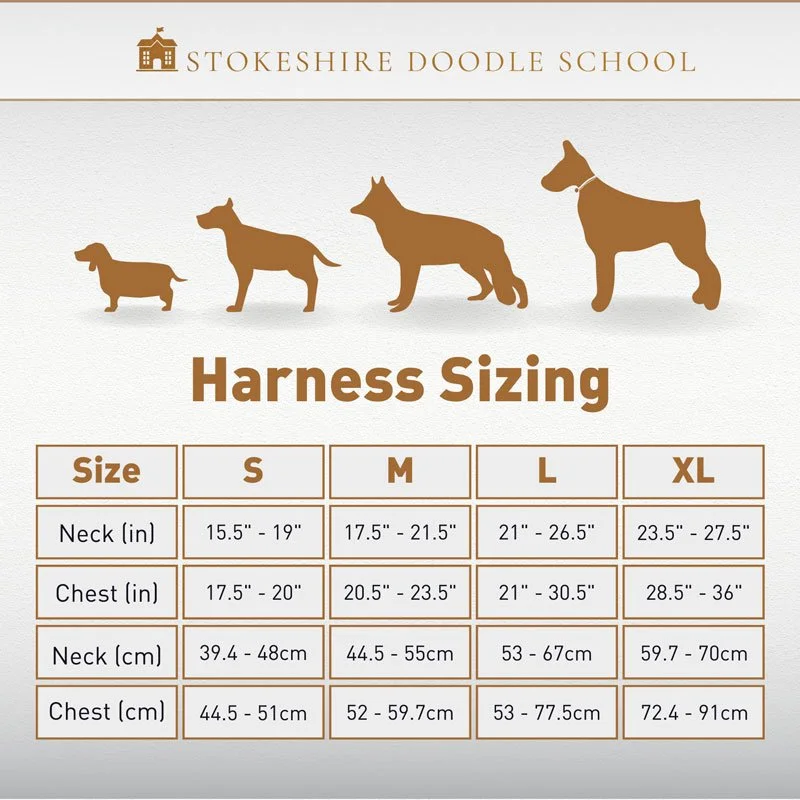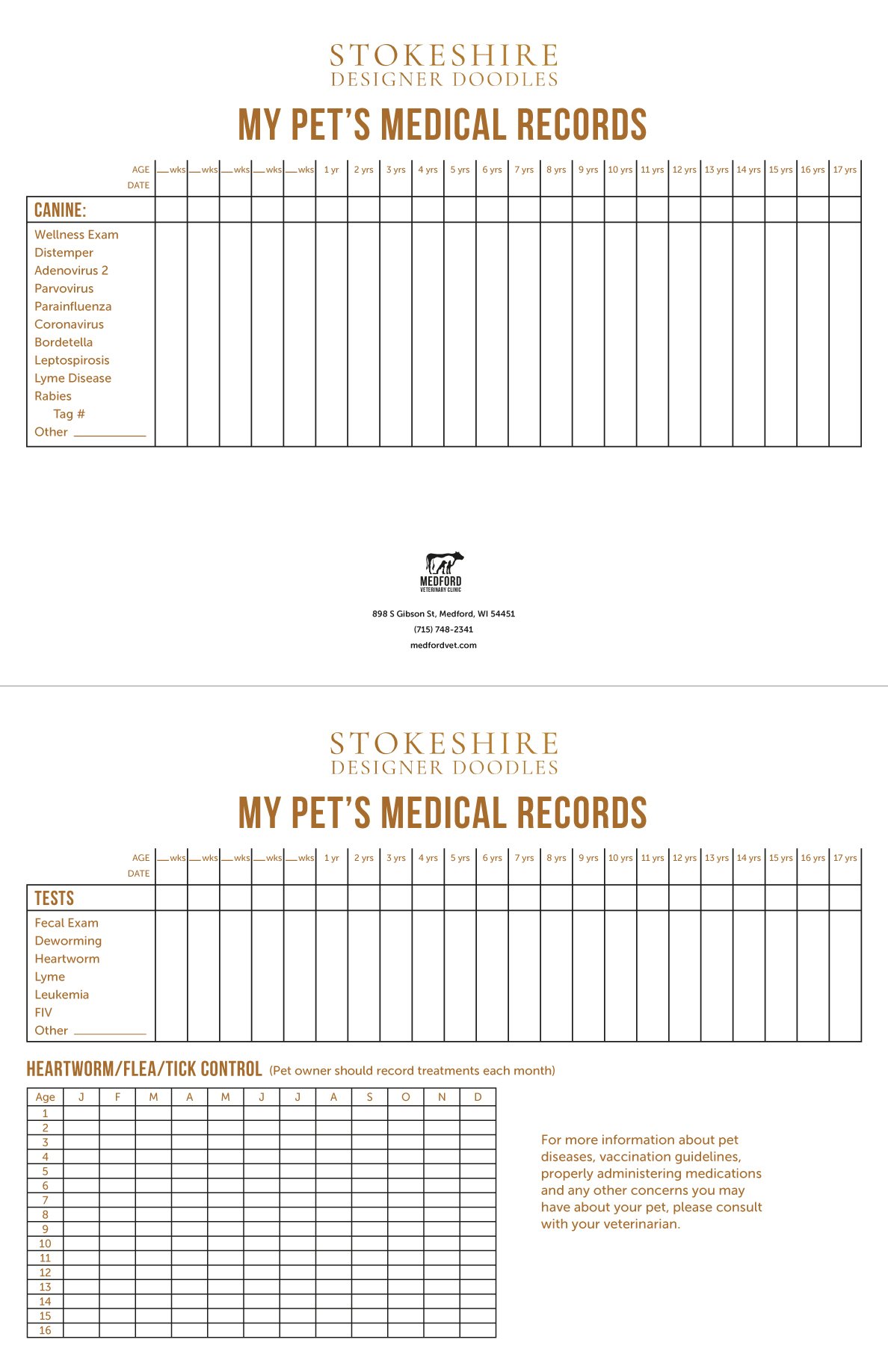how do i care for my doodle puppy?
Overview
If you already have a Doodle, no doubt you already know how much time and effort must go into caring for your canine family member; however, it’s easy to get used to a particular routine and doing this can cause owners to overlook a few care elements or let just a bit too much time pass in between. In addition, for some care related tasks, owners can be unsure about how often these should be done or the best way to go about doing them. And for anyone who is thinking about bringing a Doodle into their home, it’s always a good idea to understand the scope of the responsibility and plan for it. For these reasons, this section will cover the 9 most important care tips for a Doodle of any age.
Care Tip #1: Offer a high-quality food
What you feed your Doodle will greatly affect their health, both now and long-term. Far too many commercial brands are subpar; they may have chemicals such as artificial coloring, flavoring and preservatives which can cause everything from itchy skin to upset stomach. Some are linked to neurological issues and certain cancers.
Far too many dog foods also have fillers which are cheap ingredients that only serve to plump up food (making it appear as if there is more than is actually there); these are not absorbed by the body and simply get flushed out. These are responsible for making a dog hungry soon after he ate which is linked to coprophagia and malnutrition.
You'll also want to keep away from meat by-products which are animal parts deemed unfit for human consumption. These are typically referred to as 4-D animals which stands for diseased, dying, dead, or disabled and can be just about any species found as roadkill or sourced from zoos or farms. Body parts that are put into dog food as by-products include beaks, hooves, spinal tissue, spleens, and other tissue that you would not want your Doodle to be eating.
Issues that may get in the way: Some of the most well-recognized and well-known brands are the worst culprits that load up their kibble with questionable ingredients. These are usually the brands you'll see stacked up in the supermarket or pet supply stores and in the spotlight in TV commercials. And, it's easy to confuse 'popular' with 'good'.
What to do: Research the food that you give to your Doodle; you'll want to feel confident every time you fill up their bowl that you're offering wholesome, healthy food.
Care Tip #2: Choose healthy snacks as well
Most dogs will receive a portion of their nutrition via snacks; depending on the Doodle, this can vary from 10 to 25% of their daily intake. So, choosing the right treats is vital as well.
Many manufactured treats contain harmful chemicals that can cause allergies including itching, some such as raw hide pose risks including choking and internal blockage, and others offer nothing of value to the body.
Issues that may get in the way: The makers of treats know what to do to sell; they offer tempting-sounding tidbits with cheerful colors in fun shapes. And in many cases, a Doodle may gobble these right up, which leads owners to assume that all is well, when in fact the snack is detrimental to their health.
What to do: Find the right balance of both wholesome foods: raw carrots, blueberries & raspberries (many Doodle love these frozen), banana slices, strawberries, apple slices (no core or seeds) and commercial treats that are 100% all-natural. Dry treats should be given to tide the appetite over in between meals and soft chewy treats should be given for reward (training or to reinforce good behavior).
Look for those both sourced and made in the USA, Canada, or New Zealand (which has stringent pet food laws).
A good example of healthy dry treats is Wellness Natural Grain-Free Wellbars which can be found in delicious flavors including yogurt, apples & banana, whitefish & sweet potato, and chicken & cheddar.
And a good example of chewy training treats is Fruitables Skinny Minis Pumpkin & Mango . These are only 3 calories a piece, so you can dole them out as rewards all throughout the day as needed and they won't interfere with a Doodle’s appetite.
Care Tip #3: Assess the Water that Your Doodle Drinks.
There 2 elements to be aware of here: How much your Doodle is taking in and the quality of the water.
#1Adequate intake - Many dogs have trouble self-regulating and simply do not drink enough. Even a 3% drop in body water levels can cause slight dehydration that results in loss of focus, headaches and/or agitation.
Though much depends on a dog’s activity level, age, health status and the weather, in general a dog needs a minimum of 8 oz. (1 cup) for each 10 pounds of body weight. This can double during the summer if a dog is very active outside.
For example, a 5 lb. toy Doodle needs at least 4 oz. (1/2 cup) per day, and up to (8 oz.) 1 cup in the summer.
A 15 lb. miniature Doodle needs at least (12 oz.) 1.5 cups per day, and up to (24 oz.) 3 cups in the summer.
A 60 lb. standard Doodle needs at least (48 oz.) 6 cups per day, and up to (96 oz.) 12 cups in the summer.
What to do: Encourage your Doodle to drink by leading them to their water dish. Many dogs drink much more when given a canine water fountain; the noise and the motion attracts them to it. Bring along water whenever you go for a walk, taking a break at the halfway point to re-hydrate. Keep the water bowl clean and completely refill it (not just top it off) regularly to keep it free from food bits and nice and cool.
The other issue is the quality of the water and if you are giving your Doodle unfiltered tap water, you’ll want to reconsider. Most tap water is filled with dangerous toxins, carcinogens, and chemicals.
A few examples:
Perchlorate is a chemical that prevents the thyroid from absorbing iodine (a process that is needed for brain development); the EPA has found perchlorate in 45 US states (affecting 16 million Americans).
Chromium-6, a known carcinogen is in the drinking water of over 200 million Americans.
Fluoride which is currently found in 61% of US tap water is exceedingly toxic to dogs (and also proven to be unsafe for humans) and is linked to bone loss and deformities, kidney disease, hormone problems, cognitive damage, and osteosarcoma, which is the #1 cause of bone tumors in canines.
What to do: Never give your Doodle unfiltered tap water. Options are to connect a filter to your kitchen tap, have a filtering system installed, offer bottled spring water, or use a device like the Aquagear Water Filter Pitcher which effectively filters out just about every known toxin as the water is being poured.
Care Tip #4: Choose The Right Bowl
The type of bowl you choose for your Doodle is important for several reasons.
Material: Steer clear of plastic bowls; even those that are BPA free can cause a wide range of problems. Plastic bowls can cause a dog’s nose to become discolored, the color dyes can cause allergic reactions, the material nicks and scratches easily which can cause the bowls to harbor bacteria, and most are lightweight which causes them to slip around as a dog is trying to eat or drink.
Stainless steel bowls are best, and ceramic is a second option, though these can crack or break.
Size: You’ll want a bowl that is of appropriate size for your Doodle, in both diameter and depth, to offer a dish that makes eating easy for your puppy or dog.
Slow intake – With mini and standard Doodle, another risk for bloat is fast ingestion of food or water. Therefore, if your Doodle tends to eat or drink quickly, you’ll want to have a slow-feeder dish or place a portion pacer inside his bowl.
If you're looking for a great floor-level bowl set for your Doodle, the VivaGlory Stainless Steel Water and Food Bowl Set is ideal. There are two bowls, one for food and one for water, both are made of anti-corrosion and heat resistant stainless-steel and these are set into a very sturdy skid-resistant silicone mat that keeps the bowls in place and any spills from making a mess. As a bonus, these are available in 11 different colors and 3 sizes.
And, an effective and sturdy slow-feeder bowl for miniature and standard Doodle is the DuraPet Slow Feed Premium Stainless Steel Bowl which comes in 3 different sizes.
Care Tip #5: Safety
Many injuries and health emergencies can be avoided by routinely following care guidelines for safety. Of top concern is a dog ingesting non-food objects (leading to choking, internal blockage, or poisoning) and injury via falls or being tripped over.
Why this may not be done: Owners may have safety at the top of their mind when first bringing home a new puppy, but then phase out of this, assuming that the dog has learned to stay way from dangerous elements. It is important to note that most dogs do not mouth objects with the intention of ingesting them. They mouth things to find out what they are, to chew them, or simply out of boredom.
In regard to injury, you may be surprised to learn that a study on the mortality of dogs done over the course of 20 years shows the top leading cause of death for puppies (all breeds) is trauma.
And for adults Doodle, trauma is the 3rd leading cause of death for both standard and miniature Poodles (10.1% and 10.8%, respectively) and the 2nd leading cause of death for toys (11.7%).
Yet, so much of this can be avoided.
What to do when you bring your Doodle Puppy home:
#1 Puppy-proof the house, regularly, no matter how old your Doodle is. Always be on the lookout for items that may have fallen to the floor, check right under furniture (where a dog’s paw could swipe something out) and use cord concealer for any electrical cords that may be accessible.
#2. Use gates to block off any steps or other areas that may be dangerous. This is particularly relevant with puppies and with older, senior Doodle that may have trouble navigating around the house.
#3 Use child-proof locks on lower cabinets. There are cases of dogs getting into cabinets and chewing on/ingesting everything from feminine hygiene products to Band-Aids
#4 Never let your Doodle off leash, unless they are in an area such as an enclosed yard under supervision, a gated dog park, or other area in which you are sure that there is no chance that your Doodle can run off.
#5 Part of ‘death by trauma’ involves injuries received as a passenger in the car; we address this next.
Care Tip #6: Use a Car Seat or Restraint
As we touched on above, trauma is a serious issue to be aware of. Keeping your Doodle properly seated when in the car is vital.
Car accidents happen more than you may think. In the U.S., there are over 100 deaths PER DAY from car accidents. This is over 37,000 per year. And in regard to injuries, 2.35 million people are injured each year. Globally, there are 3,287 deaths from vehicular accidents PER DAY.
Dogs are not being kept safe; A joint study by AAA and Kurgo Pet Products found that 52% of pet owner drivers routinely have their pet with them in the car, but only 16% used a proper safety restraint.
How dangerous can it be if you don’t follow this care tip? Here’s some examples of crash force:
Crashing at 20 MPH, an unrestrained 10 lb. dog will suffer a 200 lb. crash force.
At 40 MPH, an unrestrained 30 lb. dog will suffer a 1,200 lb. crash force.
At 50 MPH, an unrestrained 40 lb. dog will suffer a 2,000 lb. crash force.
What to do: Make sure that every time your Doodle is a passenger in your car, you have them properly restrained.
Toy Doodles, many miniature Doodles, and standard puppies (dogs 20 lbs. and under) do best and are safest when in a booster canine car seat. Being raised can help tremendously with car sickness since it gives line-of-sight out the windows and keeps a dog up high near the air flow coming from the window. One of the best raised car seats for Doodles is the Kurgo Skybox Car Booster Seat . Note that with this and all other types of booster seats, the inner buckle is meant to be attached to a dog's harness, not collar.
Adult standard Doodles and any dog over 20 to 30 lbs. typically do best with a car restraint belt. You may wish to opt for a ‘direct to tether’ accessory which connects from your Doodle’s harness to your car’s seat belt. These are very easy to use and you can leave the attachment clicked in, so that it only takes 3 seconds to secure this. Another option is a harness & connector all-in-one like the SlowTon Dog Multifunction Car Harness with Connector Strap which is both the harness and the short belt that connects that to the car’s seat belt.
Care Tip #7: Proper Exercise
Making sure that your Doodle receives enough exercise is vital to overall good health and is a step that can help increase life span.
Physically, exercise keeps the heart healthy, works to maintain muscle tone and can reduce the risk of developing several diseases including canine diabetes and even some cancers.
Psychologically, exercise helps a dog release pent-up energy and often leads to better behavior.
Socially, bringing a dog outside helps them to learn tolerance of outdoor elements which leads to being better socialized and accepting of triggers such as other dogs, children, and such things as traffic.
Doodles, of all varieties, should ideally have two walks per day, lasting from 20 to 30 minutes. Add in a daily cardio session; fetch is always a great choice.
Issues that may get in the way: It’s easy to assume that a small dog that stays busy inside does not need long walks; however, moving about in the house is not the same as purposeful walking. In addition, for all sized Doodles, time and weather play a role in how often owners follow through with walking their dogs.
What to do: Plan an exercise schedule for your Doodle and stick with it, having it be one of your top priorities. This may involve waking up a bit earlier and/or delegating tasks to other family members. Prepare for less-than-ideal weather by having some key clothing pieces for your Doodle such as a warm vest or sweater on cold days.
Year-round, protect your dog’s paws with a quality paw wax like Musher's Secret Pet Paw Protection Wax . In the winter, this will help prevent snowballing (tiny ice or snow pebbles that get wedged between toes or paw pads, causing discomfort), adds traction, and adds a layer of protection from sand, salt, ice melt chemicals and freezing surfaces. In the summer, a good wax will help protect from sizzling hot pavement and help the paws retain proper moisture.
Keep the pace brisk; your Doodle should be trotting along, not moseying down the road.
Schedule at a daily cardio workout as well, ideally out in a yard where your Doodle is able to run; but even holding this session inside when the weather is bad is better than letting your Doodle remain sedentary.
Your enthusiasm will play a bit role in this, as will having fun throw toys that interest your puppy or dog. For puppies of all Doodle varieties and for toy Doodles, Zanies Mini Tennis Balls can make fetch really fun.
And for adults of all varieties, the Chuckit! Flying Squirrel is always a blast and comes in 3 sizes. Note that this also can be found as a fuzzy indoor fetch toy as well.
Care Tip #8: Annual Vet Visits
Wellness checks are an important part of care. Just like humans should have annual health exams, so should our pets. For senior Doodles, twice-per-year geriatric check-ups are needed.
There is a vast array of health issues that when caught early are exceedingly easier and less costly to treat.
The vet will perform a complete examination of the body, listen to the heart and lungs and screening will be done (urinalysis, stool sample, blood tests) to rule out common issues that do occur with dogs.
These are all important aspects of a checkup that can find issues before a dog is so ill that clinical signs are obvious.
Issues that may get in the way: The two main reasons that owners skip this are cost and denial.
What to do: Just as you budget for other ‘must haves’, so should you for this. The average cost of the initial exam is between $50 to $70. Testing may run between $100 and $200.
With the high end of this estimate being $270, you may want to round up to $300. When broken down, this equals $25 a month. You may want to consider trying to save double this, putting away $50 a month, to cover unexpected treatments, including medication.
Care Tip #9: Dental Hygiene
Doodles tend to have tooth problems; this ranges from decay to tooth loss, so making a concerted effort to care for your Poodle’s teeth goes a long way both his overall health and his quality of life.
Just like humans, plaque is constantly being formed. Without removal, this hardens on the teeth (tartar) and travels under the gum line.
It often leads to decay, gingivitis, infection (which not only can be exceedingly painful for a dog, but also can travel up into the sinuses or even to vital organs) and eventual tooth loss which can cause major problems for older dogs.
Roadblocks: Far too many owners assume that a dog does not need any care given to his teeth and that chewing on toys or hard kibble is enough. It’s not. Implementing at-home and professional dental care can add years to a dog’s life.
What to do: There are some very effective things you can do to take better care of your Foodle's teeth.
#1 Scrub the teeth. One of the most surefire methods of removing plaque is to regularly scrub your Doodle's teeth. You may assume that your puppy or dog won't let you do this. However, many Doodles tolerate this just fine and especially if they are able to get used to it by having it done every day and not just randomly.
To make this as efficient as possible, consider using a triple-sided toothbrush which scrubs all the top and both sides of the teeth in one swipe. Along with this, use a paste specifically formulated for canines. Human toothpaste which has fluoride is toxic to dogs and soaping agents that are not meant to be swallowed.
A recommended brush and paste for Doodles is Vet’s Best Dog Toothbrush and Enzymatic Toothpaste Set .
#2 Use a dental spray. If you are unable to brush your Poodle's teeth or if you want to implement this as a extra step to try and prevent tooth decay, there are some sprays that can loosen and remove plaque to a certain extent. One is Nylabone Advanced Oral Care Tartar Remover for Dogs and this works best if it's used twice a day, once in the morning and once at night.
#3 Give your Doodle a daily dental treat. The right type of dental treat can be a excellent supplementary method to help remove plaque and keep a dog's teeth clean and healthy. These work via their shape, texture, and consistency. The most popular and effective dental treat is GREENIES Natural Dog Dental Treats which can be found in 5 sizes ranging from Teenie to Large. There is the original formula, as well as grain-free and weight management.
#4 Professional cleanings are important as well. During your Doodle’s annual wellness check, the veterinarian will inspect the teeth, looking for signs of decay, and assessing any buildup. X-rays may be taken to spot decay that could be under the gum line. The teeth will be scraped and flushed. Note that this sort of dental exam is done with light sedation; speak to your vet about pre-sedation screening and monitoring your Doodle's blood pressure during sedation which can greatly reduce any risks.
Care Tip #10: NuVet Plus® supplements for Health
NuVet Plus® is a synergistic combination of vitamins, minerals, and antioxidants known to boost immune system function. All the ingredients are sourced in the United States and cold processed in order to maximize the potency and bioavailability of the nutrients. By including NuVet Plus® into the diet of puppies at the time of weaning, you can be confident that you are providing the nutrients required for optimal immune system performance.
Whole life immune support and skin and coat support
• Internally it also helps support:
o Healthy bones and teeth
o Healthy eyes and ears
o Healthy brain and nervous system
o Healthy cardiovascular and heart functioning
o Healthy kidney and liver functioning
o Healthy digestive system
o Improved energy levels
NuVet® has been making the finest nutritional pet supplements since 1997. Their mission is to provide your pet with products that are completely safe, nutrient-rich and formulated to strengthen the immune system and give your pet many healthy years of life.


